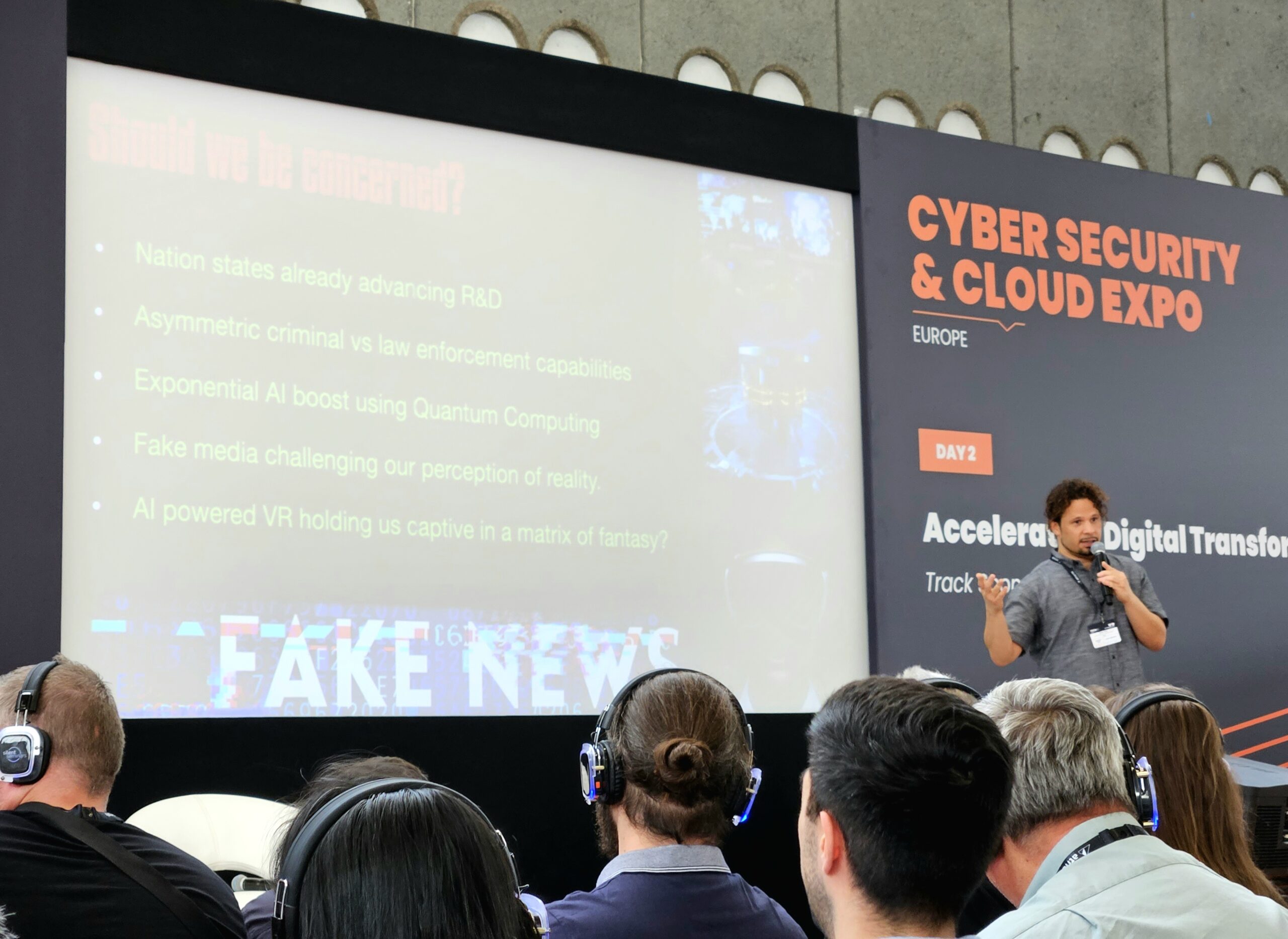
The alarming potential of AI-powered cybercrime
In a packed session at Cyber Security & Cloud Expo Europe, Raviv Raz, Cloud Security Manager at ING, turned the spotlight away from traditional security threats and delved into the world of AI-powered cybercrime.
Raz shared insights from his extensive career, including his tenure as technical director for a web application firewall company. This role exposed him to the rise of the “Cyber Dragon” and Chinese cyberattacks, inspiring him to explore the offensive side of cybersecurity. During this time, he not only developed defence tools, but also created attack tools that would later be adopted by the Anonymous hacker collective.
“The perfect cyber weapon”
One of the most intriguing aspects of Raz’s presentation was his exploration of “the perfect cyber weapon.” He proposed that this weapon would need to operate in complete silence, without any command and control infrastructure, and would have to adapt and improvise in real-time. The ultimate objective would be to disrupt critical systems, potentially even at the nation-state level, while remaining undetected.
Raz’s vision for this weapon, though controversial, underscored the power of AI in the wrong hands. He highlighted the potential consequences of such technology falling into the hands of malicious actors and urged the audience to consider the implications seriously.
Real-world proof of concept
To illustrate the feasibility of his ideas, Raz shared the story of a consortium of banks in the Netherlands that embraced his concept. They embarked on a project to build a proof of concept for an AI-driven cyber agent capable of executing complex attacks. This agent demonstrated the potential power of AI in the world of cybercrime.
The demonstration served as a stark reminder that AI is no longer exclusive to nation-states. Common criminals, with access to AI-driven tools and tactics, can now carry out sophisticated cyberattacks with relative ease. This shift in the landscape presents a pressing challenge for organisations and governments worldwide.
The rise of AI-enhanced malicious activities
Raz further showcased how AI can be harnessed for malicious purposes. He discussed techniques such as phishing attacks and impersonation, where AI-powered agents can craft highly convincing messages and even deepfake voices to deceive individuals and organisations.

Additionally, he touched on the development of polymorphic malware—malware that continuously evolves to evade detection. This alarming capability means that cybercriminals can stay one step ahead of traditional cybersecurity measures.
Stark wake-up call
Raz’s presentation served as a stark wake-up call for the cybersecurity community. It highlighted the evolving threats posed by AI-driven cybercrime and emphasised the need for organisations to bolster their defences continually.
As AI continues to advance, both in terms of its capabilities and its accessibility, the line between nation-state and common criminal cyber activities becomes increasingly blurred.
In this new age of AI-driven cyber threats, organisations must remain vigilant, adopt advanced threat detection and prevention technologies, and prioritise cybersecurity education and training for their employees.
Raz’s insights underscored the urgency of this matter, reminding us that the only way to combat the evolving threat landscape is to evolve our defences in tandem. The future of cybersecurity demands nothing less than our utmost attention and innovation.
Want to learn more about cybersecurity and the cloud from industry leaders? Check out Cyber Security & Cloud Expo taking place in Amsterdam, California, and London. The comprehensive event is co-located with AI & Big Data Expo Europe.
Explore other upcoming enterprise technology events and webinars powered by TechForge here.


